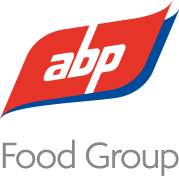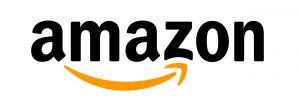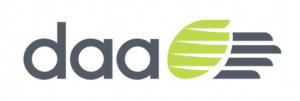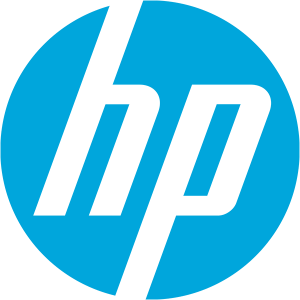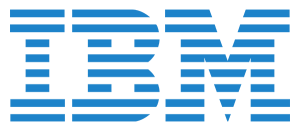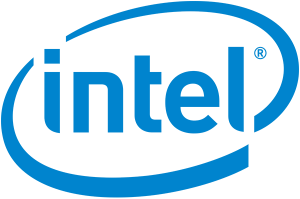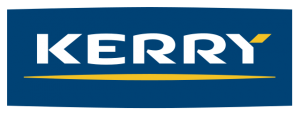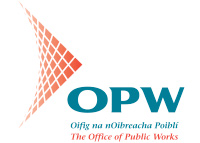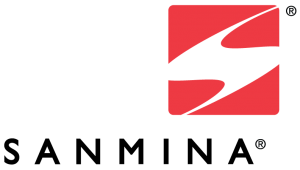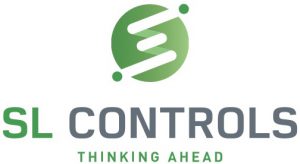Overview
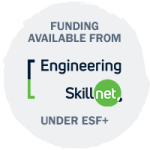 NEXT AVAILABLE COURSE: October 13th| PRICE: €1,550 per candidate
NEXT AVAILABLE COURSE: October 13th| PRICE: €1,550 per candidate
Sensors and vision systems are essential for gathering data, detecting changes, making quality assessments, and providing critical inputs for control and monitoring. They also play a key role in triggering error messages, which are often the first indicators for maintenance intervention. This immersive training course offers a structured, hands-on learning experience with a broad array of industry-standard sensors, empowering learners with in-demand skills and expertise to tackle real-world sensing challenges.
Who should attend the QQI Level 6 Digital, Analog & Vision Sensors course:
Training in sensor technology can benefit maintenance staff across a range of roles and industries. Whether you are a process operator who may be required to read sensor data to monitor machine performance; a maintenance technician responsible for upkeep and repair of sensor-based equipment; an instrumentation technician in the pharma industry where precision measurement and control systems are crucial to operations; or a technician in facilities maintenance responsible for maintaining the infrastructure of a site this training course will equip you with key skills for your role.
Why should I attend?
Our unique and custom -esigned sensor training equipment enables learners to select and setup appropriate sensors and apply logical fault-finding to sensor systems. Technicians learn how to maintain sensors effectively, including calibration, adjustment, and preventive maintenance. Knowledge of sensor technology will provide an understanding of how sensors impact machine performance and will equip learners with the skills to adjust sensor setting to optimise overall equipment efficiency.
A series of carefully structured exercises challenges learners to setup sensors to detect pass/fail conditions of a small plastic dispenser bottle. Bottles are loaded onto a carriage mounted onto a drawer slider. The slider is pushed past a sensing station that represents a machine inspection station. Sensors are wired to a Siemens PLC which runs a sensor detection program and determines the Pass/Fail condition. Learners will interact, understand & create logic within the PLC program governed by the sensor inputs. Each sensor exercise will sense different aspects of the bottle. Transparent objects present challenges to learners that will strengthen their understanding of the sensing applications in industry.
Learners will progress onto a vision sensor and will interact and understand common vison tools. They will be challenged to select, teach in, and validate a vision solution to inspect an IC type component.
Sensors utilised are as follows and amplifiers on each kit are Keyence, Omron & Sick .
- Inductive sensors
- Capacitive Sensors
- Thru-beam sensors
- Diffused sensors
- Retro-reflective sensors
- Laser sensors
- Laser Distance sensors
- Ultrasonic Sensors
- LVDT sensors
- Omron FQ2 vision sensor with touchfinder software.
Bespoke vision sensor training rigs are utilised on the course to challenge the learner by creating robust vision scenes to robustly control the quality of a product and its variables.
Course Objectives
And the end of the course learners will be able to:
- Wire, setup, teach and tune a large range of sensors to meet a process requirement using a PLC controlled application.
- Communicate precisely and with fluency when reporting on sensing applications.
- Fluently interpret the visual field of sensors and their amplifiers, to ensure robust sensing.
- Apply teach methods to include 2-point, window and hysteresis.
- Apply IO-Link functionality to inform on machine performance and remotely adjust setpoints.
- Explain Programmable Logic Control filtering of sensor signals and their role in the generation of fault/alarm messages.
- Evaluate analogue sensors, including the representation, scaling, and data manipulation of sensor data in a programmable controller.
- Demonstrate robust implementation of machine vision software tools to a sensing application.
Course Modules
Safe Work Practice in Production Environment, Circuitry, Logic Functions and Timers – What You’ll Learn
- Safety and impact on a process of maintenance activities with Sensors (e.g. over-riding, forcing, testing, adjusting).
- Electrical safety, risks and assessment, safe working practices. Basic electrical circuitry including the construction and operation of relays.
- Numbering systems and wiring diagrams.
- The Identity, Not, And, Or, XOR functions and implementing them electrically. Expressing combinational logic functions using IF THEN statement.
- Timers including On-delay, Off-delay, One-shot timers, and their application in sensor deployments
How Sensor Signals are processed by Programmable Logic Controllers – What You’ll Learn
- Overview of PLCs and their function in automation and control.
- Digital Inputs and Outputs and wiring of sensors to Digital Inputs. Opto-isolation, Wiring lamps and relays as Digital Outputs.
- Wiring to data bus slaves.
- Sensor terminations, M connectors, 3-way,4-way, 5 way.
- Basic logic programming using IF THEN Statements and their implementation using a standard PLC programming language.
- Data representation and manipulation in a PLC. Introduction to Factory IO software
Digital Proximity Sensors – What You’ll Learn
- Contact sensors, manual and mechanical contact sensors.
- Non-contact sensors and their fields. The technology, construction, and failure modes of magnetic, inductive, and capacitive sensors.
- Transistors of type PNP and NPN and their importance in the deployment of sensors.
- The concept of hysteresis and its use in sensors.
- Testing sensors using a portable tester.
- Standard symbols for sensors in electrical and pneumatic diagrams.
- Wiring 2 wire, 3 wire, and 4 wire sensors.
- Selecting appropriate sensors for various sensing scenarios. Navigating user documentation for sensors. Unit 4: Analog Sensors.
Lighting Science – What You’ll Learn
- Wavelength and modulation of light, measurements, and units.
- Colour and selecting light sources for sensing colour.
- Reflection and refraction of light. Intensity of light. The inverse square law.
- Polarisation of light and its application in sensor deployments.
- Lambert’s Cosine law. Unit 6: Optical Sensors.
- The technology, construction, and failure modes of Through Beam, Retro-reflective, and Diffuse proximity optical sensors.
- The concept of excess gain and sensitivity.
- Thresholds, Dark On and Light On modes.
Optical Sensors – What You’ll Learn
- The technology, construction, and failure modes of Through Beam, Retro-reflective, and Diffuse proximity optical sensors.
- The concept of excess gain and sensitivity.
- Thresholds, Dark On and Light On modes.
- Wiring and setting up each type of sensor, including teach modes (1-point, 2-point, Window, Hysteresis).
- Selecting appropriate optical sensors for various sensing scenarios.
Vision Sensors – What You’ll Learn
- Introduction to optics, lenses, focal length, f-stop, aperture, focussing and circle of confusion, lens distortion, and field of view.
- Overview of digital cameras, monochrome and colour, frame rate and progressive scan. Discussion of blooming and gamma correction.
- Importance of lighting in vision sensing.
- Tools available in vision sensors including detecting outlines, edge detection, area detection, detection of colour and colour averages, detection/measurement of widths, diameters, pitch, position, and angles. Detection of location of a feature, and feature extraction.
- Connecting and commissioning vision sensors to other devices and networks. The importance of correctly mounting cameras and lights, including vibration resistant mountings.
COURSE DELIVERY
- The course is delivered over 6 instructor led days. There are self directed hours to be completed before the course starts, between course days and before exams.
- Course days are scheduled over 3 weeks to enable sufficient time for self directed learning.
- Maximum group size of 8 to ensure individual attention and pace can be adjusted to learner needs
- Highly qualified and experienced trainers.
- Courseware includes quizzes and interactive learning materials and workbooks for practical exercises and revision
- Students will need a laptop or tablet to complete the course. Technotraining may be able to provide a laptop for the duration of the course, depending on availability
QQI Assessment
- Theory Examination. 30% of overall mark
- Practical Examination. 50% of overall mark
- Project. 20% of overall mark
- The pass mark for all assessments is 50%
QQI Accreditation and Progression
- 6N22484 QQI Level 6 Minor award in Digital, Analog & Vision Sensors
- This Award is one component required for the Advanced Certificate in Industrial Automation Technology 6M25693
Entry Requirements
No previous formal qualification is required but learners should have relevant work or life experience to have reached the standards of knowledge, skill and competence associated with Level 5 of the National Framework of Qualifications.
Though no specific qualification is required entrants should have some prior technical or mechanical experience or knowledge. Ideally they would have had exposure to electrically controlled equipment and/or a manufacturing environment.
Competence in written and spoken English is essential. International students whose first language is not English are required to have an appropriate score in an approved examination in English language. We accept an IELTS test score of 6. We also accept IELTS equivalents such as TOELF, Cambridge exams and Duolingo English Test.
Learners should have good computer literacy skills. This includes use of email, microsoft word, internet searches. Self-directed learning also requires learners to have good self motivation and time management skills. Again, further details and tips can be found in the Learner Handbook. You will be required to have a laptop computer.
If you would like to assess your entry level knowledge, relative to course content, please contact us and we can set you up with a free trial on our e-learning platform.
RPL is a process whereby a learner with prior qualifications and/or relevant work experience may apply to exemptions from attending the full course. Note learners will still need to pass the assessments. You will be asked to submit an application form for RPL and will be required to provide proof of qualification. RPL requirements are different for different courses and awards.
When we receive your booking request we will call you to go through an enrolment checklist with you to ensure that you meet all entry requirements for the course you have selected.
If you have any questions before making a booking request, we’d love to hear from you.
This course is funded by the Engineering Skillnet. Please contact Fiona Fennell [email protected] for further details.



